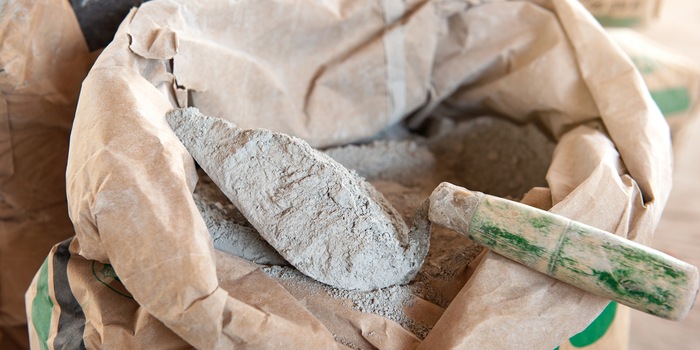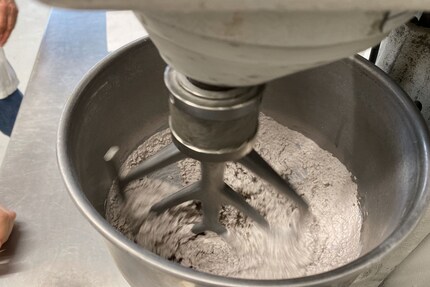
Green cement?
Cement is the most widely used product in the world, but its production process is highly polluting. The Swiss Federal Laboratories for Materials Testing and Research (Empa) are trying to find a more environmentally-friendly alternative.
Concrete is ubiquitous, whether in the building sector, civil engineering or road construction. The main component of this construction material? Cement, the most widely used product in the world, with around four billion tonnes produced every year. Limestone and clay are heated to around 1,450°C so that they fuse together to form what is known as clinker. In addition to the emissions generated by the energy induced at such high temperatures, the CO2 linked to the limestone is also released during combustion. One tonne of cement produced corresponds to around 700 kg of carbon dioxide released into the atmosphere. The cement sector therefore accounts for 7% of global CO2 emissions.
Cement containing less limestone
The United Nations Environment Programme (UNEP) is therefore calling for the development, as soon as possible, of new cement-based materials that are more environmentally friendly than the Portland cement currently used, a challenge that Empa researchers, according to a press release, have decided to take up, using different methods to do so. During its production, sulpho-aluminous cement, otherwise known as CSA, emits "only" 500 kg of CO2 per tonne. Cooked at a lower temperature, it requires a smaller quantity of limestone in the mix of raw materials, which makes a significant difference. On the other hand, it requires more water than Portland cement when mixed, a resource that is becoming increasingly scarce due to wastage. Frank Winnefeld, who works in Empa's Concrete and Asphalt Department, sees no problem with this: "The amount of water needed for concrete is much less than that needed for agriculture, for example".

Another possibility? The use of slag, which is formed during the recovery of precious metals from electronic scrap. In powder form, they can be added to cement provided the heavy metal content complies with legal standards. The type of additives in the cement could even be modified so that the combustion process is completely eliminated. According to the press release, in so-called alkali-activated cements, components such as slag, ash or calcined clay are animated to the desired chemical reaction by strong alkaline solutions such as sodium silicates.
To a layman, this only seems partly environmentally friendly. "There are advantages and disadvantages. Of course, alternative materials have to meet the same pollutant release requirements as conventional materials. For the building sector, compliance with standards and economic factors are the most important," says Frank Winnefeld. So the focus is clearly on reducing carbon emissions. Other aspects such as water use or the global vision of the e-waste sector play a minor role in the research.
Natural alternatives?
But why use cement when it is bad for the climate? Couldn't there be other natural building materials like wood or clay? "Every year, more than four billion tonnes of cement are produced around the world, equivalent to around 30 billion tonnes of concrete. Such huge quantities cannot be replaced by wood. Clay is also available in sufficient quantities in many countries, but modern infrastructure buildings have much higher requirements in terms of mechanical properties, which are impossible to achieve with this material," says Frank Winnefeld. Research is therefore continuing into ways of replacing Portland cement. But it is not yet known when these products will be marketed. Some, however, are already in the process of being standardised.
My life in a nutshell? On a quest to broaden my horizon. I love discovering and learning new skills and I see a chance to experience something new in everything – be it travelling, reading, cooking, movies or DIY.
From the latest iPhone to the return of 80s fashion. The editorial team will help you make sense of it all.
Show all